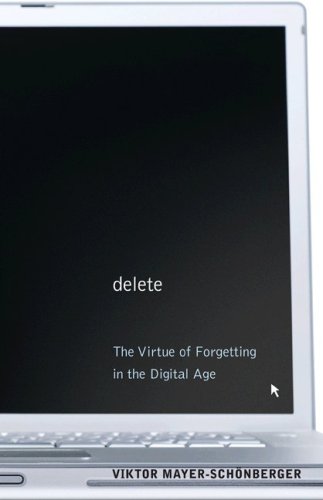Years ago I was first introduced to Goddard's Band of Outsiders. Although today I feel oppositely, then it was a new language to me and it made me sleepy. But still my friend tried to explain how Goddard intentionally used editing to interrupt the fictional narrative on screen. In the dancing scene above, music is cut out (probably very simply by using the player's mute switch - Goddard was very resourceful in his production. Like even using a wheelchair) and narration dubbed in, while you can still hear the shuffles and snaps of the actors themselves.
 Or, like later, mirrored in Terantino's Pulp Fiction diner dance scene, the narrative already being laid out is interrupted by this very theatric, but almost separate moment. Goddard's ruthless editing also makes his films look intentionally mismatched, with movements jerky or missing. A good example of such editing and (at first take, obnoxious) use of on and off music is the driving scene in Breathless. There's a fictional story being constructed here like any movie, but Goddard is also trying to make that more real by reminding us of how strange it is that these two people are probably driving the same route over and over; pretending.
Or, like later, mirrored in Terantino's Pulp Fiction diner dance scene, the narrative already being laid out is interrupted by this very theatric, but almost separate moment. Goddard's ruthless editing also makes his films look intentionally mismatched, with movements jerky or missing. A good example of such editing and (at first take, obnoxious) use of on and off music is the driving scene in Breathless. There's a fictional story being constructed here like any movie, but Goddard is also trying to make that more real by reminding us of how strange it is that these two people are probably driving the same route over and over; pretending. Goddard would famously edit together documentary like footage (long before this sort of Docu-reality became popular) of his actors on breaks or having a cigarette. And these would be written in, usually on the spot, into the movies story (this is not a post of Goddard's filmmaking prowess, but I will make one more aside: he was also infamous for changing his script daily, even making it up each morning to keep his actors and producers confused).
We're being reminded that these are movies. Artiface. And yet somehow these interruptions make other things feel more real.
When Art Observed posted this story of a found Velazquez painting (above), the chipped and old surface of the painting got me thinking again of interruptions and our sensation of reality. What sorts of imperfections were a part of image making (whether intentional or uncontrollable) that changed the image's narrative and impression on us?
Nowadays we have access to limitless information (Google) and cheap external memory (digital camera's, computers, all sorts of devices). Can too much information, or easy accessibility to it, or ability to endlessly stockpile information outside ourselves but not in our own memories, change what reality is for us? What happened to forgetting? The book, Delete, brings up the interesting conundrum of having too much memory at our disposal - essentially making us unable to forget. Making things strangely permanent.
 I guess I'm least concerned with technology for technology's sake - and more about what's happening in the likes of Goddard or that Velazquez painting: going back to some sort of imperfection, an imperfection of construction that sort of mimics how spotty our senses are. The things that make reality, well, real. Imperfect impressions.
I guess I'm least concerned with technology for technology's sake - and more about what's happening in the likes of Goddard or that Velazquez painting: going back to some sort of imperfection, an imperfection of construction that sort of mimics how spotty our senses are. The things that make reality, well, real. Imperfect impressions.Last year, I was working on this (failed) painting of a figure taking off a dress. A friend pointed out some of the best things working were the drips on the surface - sharper colors or strongly decisive, but completely unfigurative marks around otherwise detailed things "allowed us in" to the painting. It occurred to me from there on out that even figurative things require this abstract entry point - or breathing room.
I am reminded of Matthias Weisher's paintings of spaces - and all the imperfections built in: grids and drips. He is the first that comes to mind. But almost any good painter does this very thing: "suggesting, rather than explaining".
As I work from photographs for alot of my painting, I sometimes wonder how it affects my memory of those things. Each time you remember something, you are recreating it. And by doing so you're changing it. The same can be said about photographing it in the first place, or sketching it or painting it - each time your make a note - or changing one. By working from a photo, even though I discipline myself to know - well this yellow is more like a white, etc etc, how does the photograph eventually augment my memory. Or how does it change my sensation of that thing?
The important thing to remember here is that photographs, movies, paintings, books - they're all just those place holders to activate our imagination or trigger a reaction. They aren't necessarily intended ever to replace reality. So it's very interesting to me that technology increasingly makes the "trigger image" more lifelike. Watching the Apple videos for devices is always fascinating for this reason. It's strangely Utopian and terrifying.
A great NY Times Magazine on beauty and HD last week also touches on this. How does all that detail change our impression of beauty? Of ideals? Am I being nostalgic when I long for grainy, low resolution television screens and all their grouping and smooshing of detail? Isn't that what a painter's mark does on canvas: make a human and decisive abstract mark made up of pigment which doesn't exist on the object itself? Suggesting rather than explaining. I am not sure I like more information in imagery.

When working from photographs I am also confronted with the quality of that photograph. Eventually I will have been staring at the image for so long I will come to recognize the camera's own language - of forgetting. And sometimes that study of a photograph kills it for me too. Unlike live observation, the photograph is actually just a place holder to recall my own memories of that very thing. I often go back to the original object in some form (and even better, but not always accessible, is painting from life anyway) and try to re-remember something about it.
As an aside about photography: I have always responded best to photography that boldy groups shadows or objects in them. Even a photograph has an abstract language, albeit increasingly higher-res.
Another NY Times article, celebrating the anniversary of Roswell, mentions "that on the one hand, digital media 'may be hurting the cause of reality: such nonsense gets spread much faster than it used to.' But 'it’s easier for the correct explanation to spread as well.'" Part of what made the documented UFO evidence so exciting was all the detail that was left out.
I am not sure the correct, exact explanation always makes things more vivid for me. And maybe it's years of overwrought painting, but I think reality has alot to do with forgetting.
And only related to the ideas of ambiguous painting, via Undercover Painter: Douglas Witmer's brilliant statement.


No comments:
Post a Comment